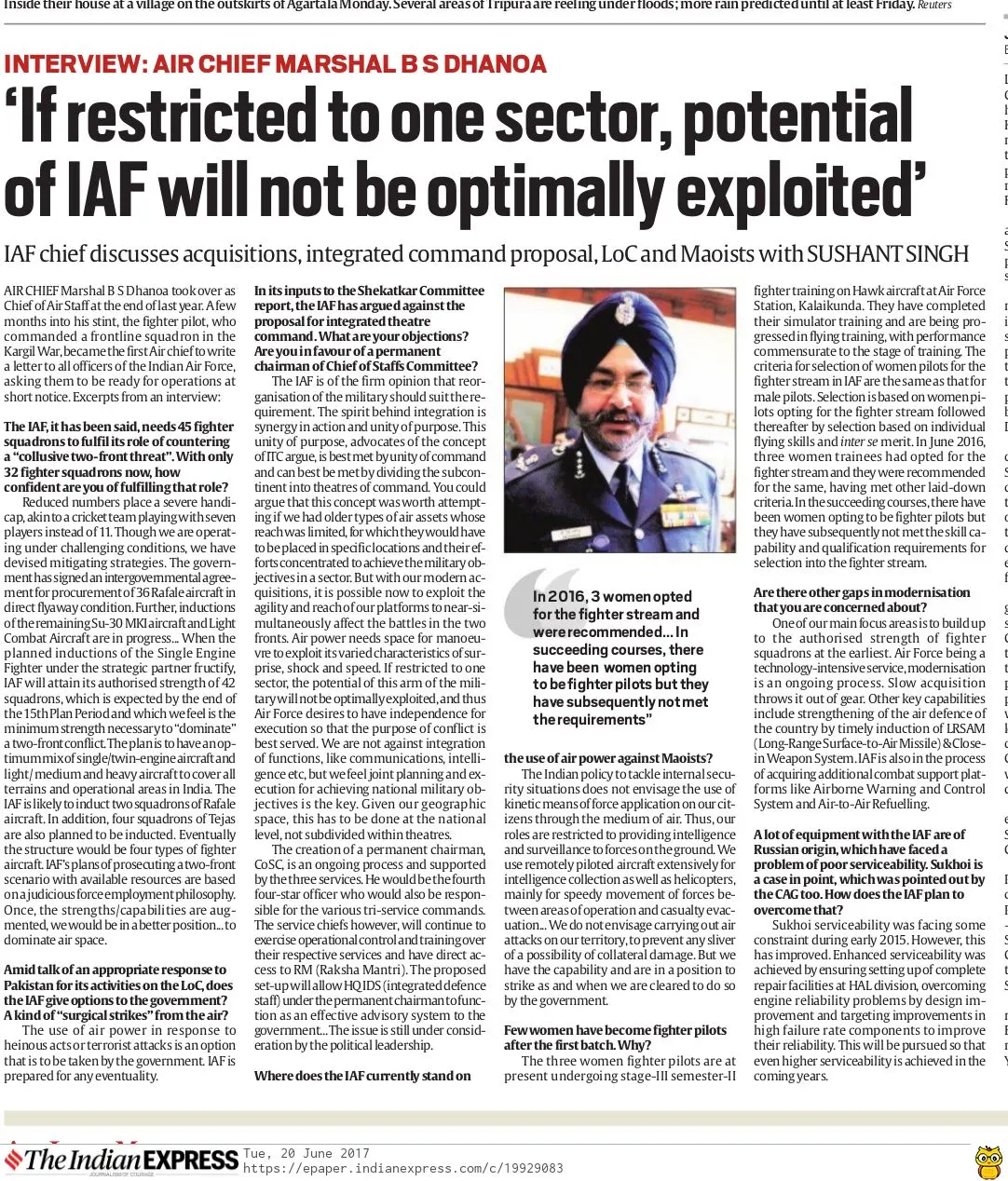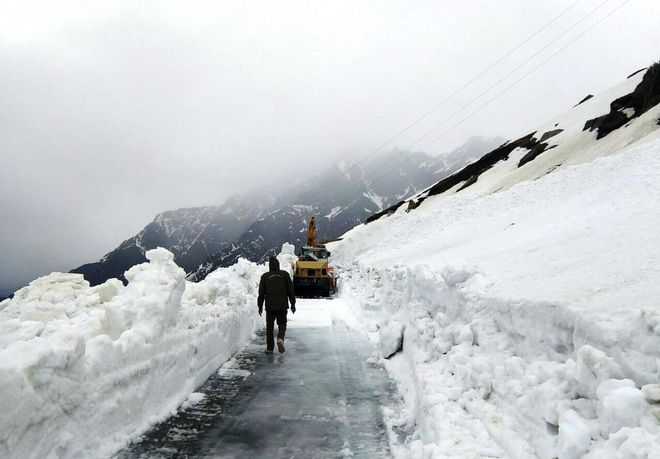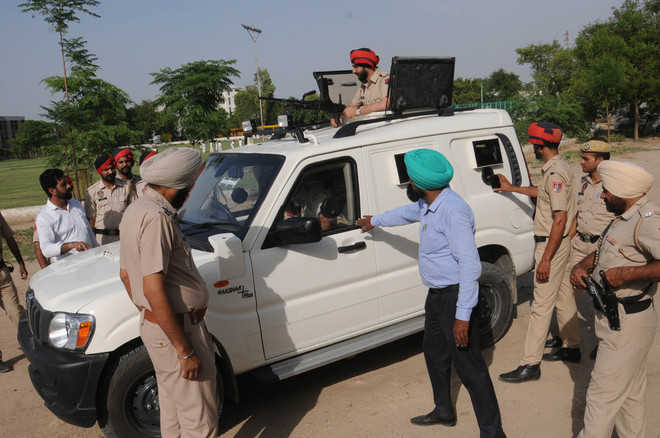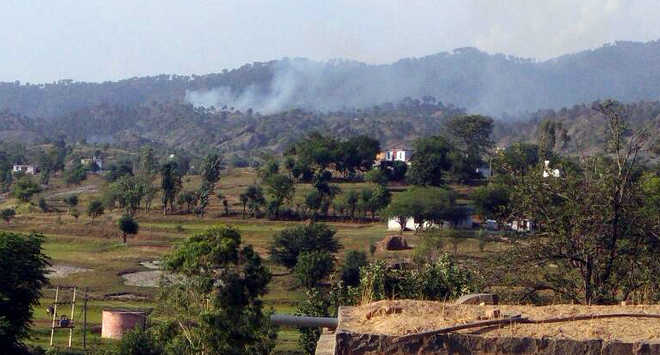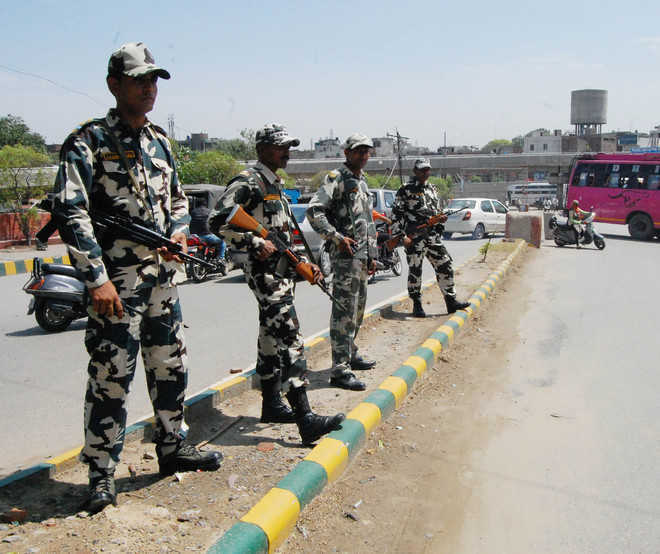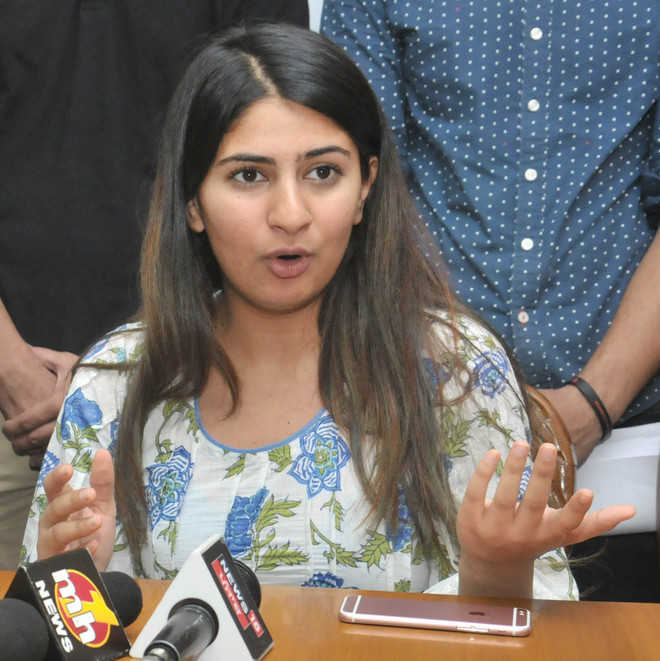From serving in the British Indian Army, fighting in world wars, the India-Pakistan wars, and many others, meet the families who have sent generations to the Armed Forces, and whose history is the history of the Indian Army. What sustains their olive green (OG) fixation

I am not being sentimental. I’m a very practical person.” Group Captain Shahid Ali Khan Durrani, 81, issues these riders seriously before he adds: “I’ll put on my uniform for the last time before I kick the bucket when Bruno graduates from the military academy as commissioned officer Lieutenant Shahnawaz Ali Khan Durrani.” He enunciates the rank and name with a compere’s boom. When that happens, a third generation will be added to the simple red nameplate outside the house in Lucknow, under the older occupants who opted for the uniform.
Shahnawaz’s grandfather has always called him Bruno after heavyweight boxing champion Frank Bruno and a European gun by that name. Our homegrown Bruno is a good shot and not worried about completing the Services Selection Board (SSB), including the obstacle course (never hesitate before you fling yourself from the platform to grab the rope hanging 5ft away in the Tiger Leap challenge, is standard advice). His main worry is that he is overweight.
(standing, from left) Savit Khanna, Ajay Shah, Bobby Rizvi and Shehzada Kohli with their fathers—all of them served or are serving with 14 Guards.
He’s down from 98kg to 73kg when we meet a few weeks before the qualifier exam for the Indian Military Academy (IMA), courtesy a strict 3-hour cardio, weights and functional training regime. He has been on a diet for so long he can’t remember the last time he ate pizza. There is one thing he’s allowed to consume in unlimited quantities: green tea.
Bruno will do whatever it takes to join the army. Ever since he was asked what he wanted to become when he grew up, his response has been unwavering: “I want to be like my father.” He even tried to persuade his best buddy to sign up with him, but Kamran has his own set of clear goals: Get married and go abroad for a master’s in business administration.
I first heard of Shahnawaz’s father, (Retd) Lieutenant Colonel Salim Durrani, in a TEDxGateway talk by former army officer Captain Raghu Raman titled “Our Stereotypes Will Kill Us”. “For over three years, Salim lived in hiding in the Kashmir Valley. He seldom stayed in the same place for more than a couple of nights. He disguised himself to live undetected among the local population and even worked on his dialect to pass off as a local. He is a devout Muslim who prays five times and like a true warrior he is never ever away from his AK-47…”
Three generations of 6 Sikh, (Retd) Colonel Aklesh Kumar Singh, Captain Akshay Kumar Singh, and (Retd) Lieutenant Colonel Avadesh Kumar Singh.
Raman was making the point that when we hear a Muslim name, an AK-47 and Kashmir in the same sentence, we jump to a wrong conclusion.
“Salim Durrani is my coursemate…his family has three generations of more than eight officers who have served in the forces, amassing six gallantry medals amongst them. Salim’s son is joining the Indian Military Academy this year to continue the family tradition,” he added.
I picked the Durranis to tell this story, but you probably know a family that has been wedded to the Armed Forces even longer, where generation after generation unhesitatingly opts for the uniform. All the current chiefs of the army, air force and navy have a family connection in the forces. General Bipin Rawat is the son of Lieutenant General L.S. Rawat, Air Chief Marshal Birender Singh Dhanoa’s grandfather was in the army and Admiral Sunil Lanba is the son of Commander Rajendra Singh Lanba.
British officers and Indian sepoys of Hodson’s Horse, a regiment which was raised in response to the 1857 Revolt.
The father of Major Som Nath Sharma, the first soldier to be awarded a Param Vir Chakra, India’s highest military decoration, was Major General Aman Nath Sharma. Som Nath’s two brothers rose to become generals in the army. The youngest retired as chief of army staff. One of their sisters was a major, the highest rank for a woman then. Both sisters married army men. Two of the 13 children of these five siblings joined the army. “This is just one small piece of my family history,” says one of them, (Retd) Colonel Gautam Shaunik. His wife’s father and grandfather were in the army too. His maternal grandmother, of Hungarian-Russian origin, designed all the gallantry awards. His family’s military history is so deep and intricate that his son Sagat maintains a blog about it.
In 2015, when 26-year-old Lieutenant Arjun Singh Chauhan graduated from the IMA, he became the seventh-generation army officer in his family. His forefathers have fought every big Indian war, beginning with the Battle of Plassey in 1757. His father, (Retd) Colonel Anoop Singh, told The New Indian Express: “A long family tradition has changed the colour of our blood to olive green (OG).”
What draws this family to the Armed Forces? “Frankly speaking, what I value is the friendship more than anything else,” Singh tells me. “You’re part of a very large, well-knit family.” In the age of instant messaging, it’s a family that never wanders too far.
It’s also a bond that extends beyond soldiers. A daughter left alone after her father’s unexpected death is likely to be the catalyst for coursemates to come together online—and in the real world—in a show of family strength.
Three generations of the Durrani family, Shahnawaz, (Retd) Group Captain Shahid Ali Khan and (Retd) Lieutenant Colonel Salim Durrani; Photo: Priyanka Parashar/Mint
Four generations of Colonel Sandeep Ahlawat’s family have served with Skinner’s Horse, a historic cavalry regiment of thoroughbred horses and charging lancers that is now an armoured regiment of battle tanks and mobile field guns. Something like this is possible because a son is allowed to opt for the same unit as the one in which his father served.
Ahlawat always wanted to join the civil services—his brother was the one who was supposed to join the army—but life’s GPS can often prove unreliable. After his brother cleared the SSB, they discovered he was colour blind. Their father insisted that one of his sons sign up. Now Ahlawat is determined that one of his sons, Shivam, 19, or Shivraj, 15, join the regiment.
“Once a family tradition sets in, it’s a question of the next generation trying to fulfil something the family has ordained for them,” says Salim. Adds his father: “I did influence him, he’s my only son. I spent 25 years in the forces and saw three wars. I had seen the dignity and honour in the forces.”
This tradition is most widespread in army families because it has a longer history than the air force or navy; Indians made up the colonial army too. Often, like in the case of the Durranis, the uniforms can vary from khaki (Salim’s grandfather Nadir Ali Khan was in the police service from 1912-48) to blue (Shahid, as you know, was in the air force) to OG.
In this world of families who opt for the Armed Forces unblinkingly, concepts like respect, valour, honour weigh more than money or the corner office; it’s no wonder that recent controversies over the salaries and pensions of the Armed Forces have upset most men in uniform.
Captain (later General, and Chief of Army Staff) Vishwa Nath Sharma receiving an oil painting of his brother Major Som Nath, Param Vir Chakra (posthumous), from the army; Courtesy Sagat Shaunik
Their homes are museums of medals, citations and a lifetime of adventure. Their walls are festooned with images of their paltans, spouse visits to faraway postings, and handshakes with famous people. Their children grow up across cities, moving frequently and often without their fathers. In these homes, the shoes are spit-polished, women are ma’am-ed and guests always overfed. The manners and hospitality are always impeccable though you might struggle to keep track of the conversation if you’re not familiar with acronyms such as PC, HEPTR, OSL and CI (parental claim, helicopter, overstayed his leave and counter-insurgency, respectively).
Also, the stories are something else.
Like the time Salim and his buddy, Havildar Jagdish, a double gallantry awardee who died last year, had a close call. Back then—between 1998 and 2002—Salim and his paltan were operating undercover in Kashmir, armed with AK-47s that had been captured from militants. The CI expert looked the part with his long beard, shoulder-length hair and Pathan suit. It helped that he’s a real Pathan.
That one time the two men were climbing up a narrow mountain trail, their weapons slung across their shoulders, not expecting trouble. That’s when they saw a man on the rooftop of a dhok, a mountain hut constructed by Bhakkarwal shepherds. He was pointing his gun at them.
“Stop. Who are you?” he said
“Mujahid,” Salim replied.
“Which branch?”
“Lashkar.”
What’s your name?”
“Abu Inzamam” (back then Inzamam-ul-Haq was Durrani’s favourite cricket player.)
“There’s no Abu Inzamam in Lashkar,” the man said, tightening his finger around the trigger.
“I’ve been here two-and-a-half months. Where are you from?” Salim replied.
“HM (Hizbul Mujahideen). You’re a Pathan?”
“Yes.”
“Where are you from?”
Salim named the first place that came to his mind. Bagh in PoK (Pakistan-occupied Kashmir).
“There are no Pathans in Bagh,” the armed man replied.
It was clear to the two soldiers that he was on to them.
“What sort of jihad is this when one mujahid doesn’t recognize another?” Salim said, flinging his weapon away. The terrorist was distracted for a second.
That’s when Jagdish shot him.
Shahid may not be able to compete with the testosterone levels of his son’s stories, but that doesn’t mean his are any less gripping. As the services representative on the Board of Control for Cricket in India, he went on tour as team manager to Australia in 1981. Remember that final game when Sunil Gavaskar, who was having an extremely poor run, suddenly threw a hissy fit? The umpire had called him out, Gavaskar protested but to no avail and after the Indian captain exchanged some angry words with Dennis Lillee, he began walking off the field, dragging fellow batsman Chetan Chauhan with him. “I knew that it could mean us conceding the match or being debarred from international cricket,” says Shahid.
The last family photograph of the Sharmas, with Major Som Nath (seated, left), taken at Rawalpindi in 1947. Courtesy Sagat Shaunik
He ran down from the terrace dressing room, taking batsman Dilip Vengsarkar with him. “Gavaskar was pushing Chauhan by his neck. Both came up to the rope, I shouted at Gavaskar to come out, told Chauhan to go back and pushed Vengsarkar in. The game carried on,” he says. India won by 59 runs.
In addition to being the person whose stories everyone is drawn to, you also end up being a de facto expert on military history. Four generations of army men, for example, would mean the family’s first military man most likely fought in World War I, its second in World War II, its third in the India-Pakistan wars and its fourth in Kargil.
In the case of the Ahlawats, for instance, the four generations have been part of operations in Kabul and Kandahar, the Boxer Rebellion in China, World War I, World War II, the Liberation of Goa, the India-Pakistan wars of 1965 and 1971, Operation Vijay, Operation Rhino, Operation Hifazat and Operation Parakram.
Sometimes, the OG narrative weaves through more than one family to create a sturdy quilt of friendships that can envelop the next generation.
“All our four dads were in the unit at the same time,” says Colonel Bobby Rizvi. It was the 1980s and the four boys, Savit, Ajay, Bobby and Shehzada, studied together, lived next door to each other and grew up on a staple of Commando comics. The boys played hockey and cricket and divvied up only to cheer their respective fathers when they played any sport against each other. “We came together at that moment in time,” says Bobby. Eventually, the “pappu party”, as they were nicknamed by the unit, joined 14 Guards, where their fathers had served. In an incredible coincidence, the four boys even went to the Siachen Glacier together. Now they are married and stationed in different corners of the country but their bond is intact. They continue to meet whenever they can—at the silver jubilee of their unit in Patiala, or at a unit officer’s child’s wedding.
The tradition is further reinforced when families enrol their children in a school with a strong military connection. La Martiniere College in Lucknow, the alma mater of Salim and Shahnawaz Durrani, still displays the battle honours it was awarded by the British for its role in defending the Residency during the uprising of 1857. The awkwardness of history is faced head-on here, its mementos carefully treasured. There’s the Gnat aircraft that was nicknamed “Saber-Slayer” in 1965 because it effectively brought down many of Pakistan’s F-86 Saber jets. The first one was shot down by Martinian Trevor Keelor. Trevor and his brother Denzil, also an air force pilot who graduated from this school, were both awarded Vir Chakras.
The cannon used by Lord Cornwallis against Tipu Sultan in Srirangapatna occupies pride of place in the sprawling school grounds. Brevet Major William Stephen Raikes Hodson, who raised Hodson’s Horse, the 4th Horse regiment in the Indian Army, is buried here. Nine of Salim’s classmates joined the army the year he did.
Yet all of this only partially explains why generation after generation of a family continues to pick the Armed Forces when there are so many options available to them. In the digital age, it’s almost other-worldly to encounter families that keep this tradition alive.
Major Som Nath’s nephew Shaunik, whose family history is the history of the Indian Army and whose home is a virtual military museum, now has no family members in the army. “I think if you do a little statistical check you’ll find this phenomenon is much less today than it was in the past. Times have changed, I think,” he says. I was unable to get any data from the army to confirm this. But numbers, even if available, may not show a change.
(Retd) Lieutenant Colonel Kundan Rawat is a fourth-generation army man whose great-grandfather was one of the first to join the Garhwal Rifles in 1891 and who rose to the rank of Subedar Major. Rawat retired early to be around for his daughters. “My father was never available to me, I remember him being there only once during my class IX admission,” he says. Rawat made all his education and career decisions himself. Back in the 1980s, he says, there was a different kind of respect for military personnel. Now, he says, most civilians don’t really know much about the forces. “Despite seeing my rank, people ask, ‘Are you from the army, navy or air force?’” Rawat’s elder daughter Shefali never considered this career, opting to become a hardware engineer instead. He is still hoping his younger daughter, Kshitija, 13, will join the army.
Fewer children of existing officers may be signing up, but the Armed Forces also tell another story of Indian change and the betterment of lives. The story of advancement with every successive generation has played out across professions and the Armed Forces are no different. There are countless examples of a jawan’s sons becoming junior commissioned officers (JCOs) and their sons, in turn, becoming officers.
Colonel Shyam Darshan Pun’s grandfather travelled from Nepal and joined 1 Gorkha Rifles (1GR) as a sepoy instead of becoming a farmer like his father before him. Many Nepalis go back to their country after serving but Asharam decided to stay on and bought a two-bedroom house for Rs500 in Dharamsala cantonment with his pension. The next two generations were born there and most joined the army.
“I wanted to follow in the footsteps of my father and grandfather. It was a matter of great pride for us,” says Shyam Darshan. Now his two sons Shalabh and Sharang both command Gorkha battalions. And Sharang’s 10-year-old son, Samridh, has already decided he will be the eighth family member to join the regiment.
For the children of officers who keep the family tradition going, the reasons are aplenty. Foremost is the love for life they saw their father had and the respect he commanded. This works both ways, for your unit also measures you against your father. “They compare you with your father. My dad was very strict and stern. He rarely smiled. I was more relaxed and cordial. They would say you are totally different,” says Bobby, who finds the army brotherhood even more fulfilling because of his childhood friends.
Then there’s the idea of giving back. “My father made sure none of his children went to Pakistan at the time of Partition,” says Shahid. “Today all of us are proud to say my country gave me much more than I deserved.” His son is a little more circumspect. “As far as the Muslim community is concerned, the Armed Forces are the best option. Your religion is the religion of your troops. That’s all there is to it. I have commanded a Rajput company all my life. I was more Rajput than they were,” says Salim.
As for Shahnawaz, the Tiger Leap went well but he didn’t qualify for the SSB. It doesn’t matter, the 20-year-old is unfazed. “I have already filled up the form,” he told me the day after he got the news.“I’m eligible for 12 more chances, ma’am. I’ll try again in summer.”












